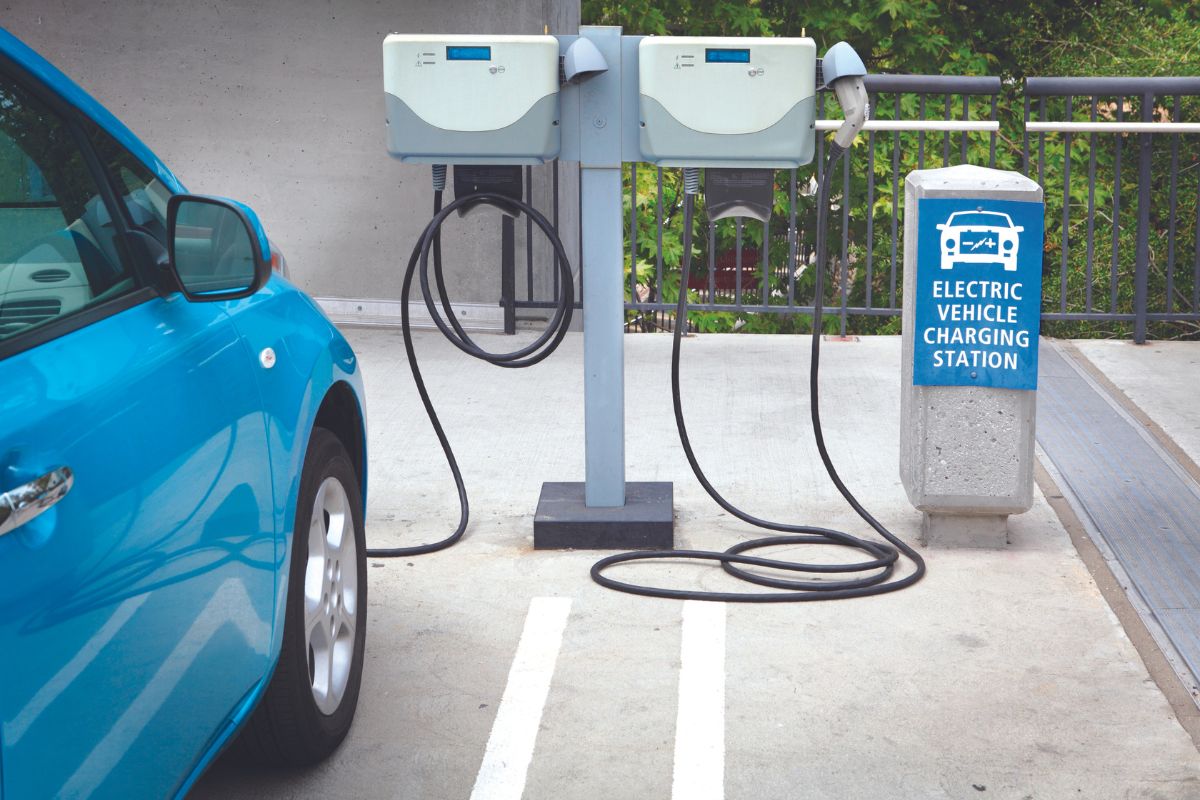LOW BATTERY: The dreaded warning from your phone and other devices to locate the nearest outlet and plug in. Once you find an outlet, it’s anyone’s guess how long it will take to reach 100%. Charging time depends on the battery size, its efficiency and the power source and charging connector used.
Charging an electric vehicle (EV) is subject to the same factors but the most critical are the power source and charging station. Let’s take a closer look at EV charging stations and the differences in charging time.
Level 1 charging
Voltage: 120-volt outlet (standard household outlet)
Power output: Around 3-5 miles of range per hour of charging, 17-20 hours to fully charge a battery electric vehicle.
Level 1 chargers are the slowest and most basic type. They're often used for overnight charging at home using a regular household electrical outlet, and typically meet daily driving needs.
Level 2 charging
Voltage: 208-volt or 240-volt outlet (home appliance outlet)
Power output: Around 8-24 miles of range per hour of charging, 4-5 hours to fully charge a battery electric vehicle.
Level 2 chargers are more powerful than Level 1 chargers. They’re commonly found at workplaces and public places such as gas stations, shopping centers and parking garages. Many EV owners install Level 2 chargers at home for faster charging. These chargers usually cost $500-$4,000, including installation fees.
Level 3 (“DC fast”) charging
Voltage: 208 – 480-volt outlets
Power output: Fully charges in just 15-45 minutes.
DC fast chargers are the fastest charging choice and typically used for long distance travel or when you need a quick charge. They're commonly found along highways and major routes, as well as in urban areas.
The cost to charge EVs in public depends on the state and host that supplies the charger. Public EV charging stations may be priced per hour, kilowatt-hour, session or as a monthly or annual subscription fee. Some public charging stations are even free. No matter the fee, electric rates will cost you less per mile than gasoline. Check out the U.S. Department of Energy’s Vehicle Cost Calculator to find out how much you could save by going electric.
Charging stations continue to pop up across the nation. Depending on the plug and connector your vehicle needs, some chargers are better than others. Again, think about charging your phone. Depending on the phone you have, another phone brand’s charger might work well, a little or not at all.
To combat this and increase phone charging access, the European Union passed legislation standardizing phone and other device chargers to USB-C type connectors.
Could standardization of EV chargers be next? Learn more about the ongoing effort to expand EV charging infrastructure worldwide.

Electric vehicle charging basics

Grant Barton
Communications Partner
Published on October 06, 2023
Grant Barton is a Communications Partner with a passion for sustainability and eco-friendly city planning. He has a diverse background in engineering, politics and international communications and hopes to apply this experience when writing and breaking down complex topics related to Alliant Energy's Clean Energy Future plans.
Recent Stories
Alliant Energy builds a stronger community with Habitat for Humanity
Our company contributes to Habitat for Humanity in many ways including recent building events with Wisconsin’s Habitat for Humanity of Dane County (HHDC) and Iowa’s Cedar Valley Habitat for Humanity (CVHH).
Read More
Industrial food grade building available in Fort Madison, Iowa
A location now available and potentially eligible for an incentive power rate is a site formerly used to manufacture metal cans for the food industry.
Read More
For Alliant Energy VIP Shannon Self, volunteering takes center stage
Shannon Self is constantly lending a helping hand in her community.
Read More
